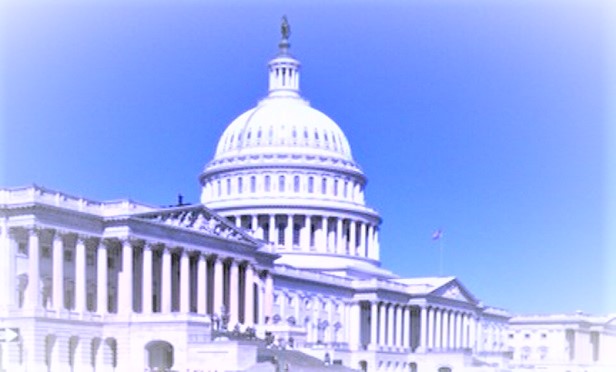 With noone party in control of Congress and the executive branch, whatdoes the next two years look like? (Image: AllisonBell/TA)
With noone party in control of Congress and the executive branch, whatdoes the next two years look like? (Image: AllisonBell/TA)
While much of the focus in 2018 came down to the elections, we now have thoseresults and can begin moving forward.
|But, with a divided Congress, what will the impact be onthe health insurance marketplace, the health caredelivery system, the advisors and employers that interact (plan,strategize, implement and execute) with health benefits, and, mostimportantly, the employees that participate in theemployer-sponsored benefit plans?
|The policy landscape
Following the Kavanaugh hearing Sen. Jeff Flake commented thathe would have voted differently regarding the FBI investigation ifhe was running for re-election. This comment paints a picture thatour representatives to Congress are concerned with advancingpolicies that secure their re-election rather than the well-beingof their constituents that they represent. With that backdrop, thestatus quo will be the likely outcome with regard to the currentstate of the Affordable Care Act (ACA), and America's group healthplans, until the 2020 election.
|Related: Bye bye Cadillac tax, hello Congressional healthcare gridlock
|Are there policies and regulations that the parties could agreeon?
|Here are two observations, based on the assumption that membersof Congress are thinking about two goals: getting re-elected, andhelping their constituents.
|First, if there is any change in policy, it could involve abipartisan approach to addressing prescription drug costs and theimpact of prescription drugs on the health and safety of thecommunity. The national discussion around opioids, the increase indrug prices on certain medications, as well as the lack ofaffordable generic equivalents, are issues that both parties wishto address from a policy perspective.
|However, this represents a change on the margins and not arepeal of the program offered through President Obama or thealternative program offered by President Trump. Further, anincremental approach will not have any true and meaningful impacton the cost of health care – which is supposed to be the focus.Rather, the focus will be on insurance or premium reform.
|The second observation is that, while the focus has been onhealth and health care policy — which is really an example of atremendous expenditure of energy leading to no action — there isnot an equal amount of attention being given to regulations foremployers and advisors to meet, which come with real economicconsequences. For example: Fines and penalties.
|What could change
So, with no one party in control of Congress and the executivebranch, what does the next two years look like? Likely, the partieswill be eyeing the 2020 presidential election and one of the keytopics will be what the social contract with America lookslike.
|For example, the crushing national debt, cost of health carecost, the cost of tuition and the educational debt and incomedisparity and burden this has on the vast majority of individualsin this country will push political parties to renew calls toaddress this situation, however, their energy to tackle this andtheir solutions will greatly differ.
|The debate could focus on the need to raise tax revenues, cutgovernment costs, or a combination of both.
|If raising tax revenues is the strategy chosen, the impact onthe individual is important. It is certain that all taxpayers willneed to contribute some amount of tax revenue to buy down the debt.But, with the median household income hovering right around $60,000and the average American household carrying $137,000 in debt, theproblem becomes pretty clear: Most people are not in a secure placefinancially – whether this is saving for future retirement or evenfor a rainy day!
|This financial picture will challenge the parties to evaluatewhat the new social contract with America will be. How does itaddress the financial and non-financial issues noted above?
|Ideological tribes
With such big issues to tackle and the current tribal mentalityon their ideological islands, the political landscape and theability to reach across the aisle in a bipartisan manner is justnot present. But, if elected officials follow the words ofPresident Lincoln from his Gettysburg Address “… and thatgovernment of the people, by the people and for the people shallnot perish from the earth,” then maybe they can work together andaddress these big issues.
|For employers and advisors planning ahead for 2019 and 2020 anychanges in the ACA and AHIP will be on the margins (prescriptiondrug cost regulations for example), but not wholesale gutting orelimination of the policies. Employers' attention should remain onregulatory obligations so as to avoid penalties.
|As the United States prepare for the next election, we willcontinue to have a more fervent discussion about what its socialcontract will be with the citizens — and non-citizens — of theUnited States.
|Not the environment Lincoln wanted
If history is any teacher, this returns us to 1961 and 1962 whenJohn F. Kennedy attempted to advance the social contract andintroduced and signed into law the introduction of benefits – whatwe now know as Social Security — for 4.4 million citizens, whichprovided financial assistance and was paid for through a payrolltax increase. Reviewing history, there was the tremendous nationaldebate about his policy goal. In the end, he won the hearts andminds over to have this policy passed and put into law.
|While we should remain optimistic that for the next two yearsCongress can achieve significant policy goals, the reality is thatthe environment is less like the one outlined by President Lincoln.It is a Congress that may be of the people, but unfortunatelybehaviorally it is operated by the elected official, for theelected official.
Read more:
- Industry experts react to midtermelections
- How will the midterm results affect the benefitsindustry?
- Next up for GOP: Shooting down Medicare forAll
 Perry Braun is the executivedirector of Benefit Advisors Network(BAN) – a national network of independent employee benefitbrokerage and consulting companies.
Perry Braun is the executivedirector of Benefit Advisors Network(BAN) – a national network of independent employee benefitbrokerage and consulting companies.
|
Complete your profile to continue reading and get FREE access to BenefitsPRO, part of your ALM digital membership.
Your access to unlimited BenefitsPRO content isn’t changing.
Once you are an ALM digital member, you’ll receive:
- Critical BenefitsPRO information including cutting edge post-reform success strategies, access to educational webcasts and videos, resources from industry leaders, and informative Newsletters.
- Exclusive discounts on ALM, BenefitsPRO magazine and BenefitsPRO.com events
- Access to other award-winning ALM websites including ThinkAdvisor.com and Law.com
Already have an account? Sign In
© 2024 ALM Global, LLC, All Rights Reserved. Request academic re-use from www.copyright.com. All other uses, submit a request to [email protected]. For more information visit Asset & Logo Licensing.








